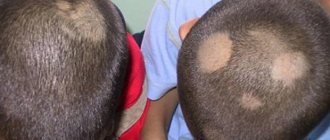1655
Steatohepatosis is a disease in which fat accumulates in liver cells (hepatocytes). Over time, hepatocytes transform into fat cells. This leads to a deterioration in the process of bile formation and many chemical reactions in the body.
If there is no timely treatment, the risk of developing severe complications – cirrhosis, steatohepatitis and liver failure – increases. What is steatohepatosis, what are the causes, distinctive signs and methods of treatment - all these questions are discussed in this article.
What kind of disease is this?
So, what kind of disease is this, if you break down the word (steatohepatosis) into parts, hepatosis is any disease or change in the liver associated with its structure. And steatosis, or it is also called steatohepatitis, is (fat) or its accumulation in the liver, which subsequently leads to diffuse changes in the organ, then to dysfunction and destruction of the cells of this organ. All this ultimately leads to cirrhosis or liver failure.
There is a single regulatory document - the International Classification of Diseases (ICD-10), where each disease has a unique code. Liver disease code in ICD 10 from K-70-K-77. According to the international classification of liver diseases, steatohepatosis has code K76.0.
There are two types of steatohepatosis:
- Alcohol - as everyone knows, the liver is the main filter in the body. With its help, all harmful substances entering the body are filtered. Alcohol goes through certain stages in the digestive tract and releases toxic substances that accumulate in the liver. An allergy occurs, and then healthy cells are replaced by fat cells, subsequently developing alcoholic steatohepatosis of the liver.
- Non-alcoholic - the main difference from the previous one is that steatohepatosis does not develop due to alcohol consumption. Fatty hepatosis and chronic hepatitis lead to this disease. They gradually reduce the normal functioning of the liver, and fatty, salty, smoked foods and antibacterial drugs accelerate the development of the disease. This disease occurs more often in women with excess body weight, as well as high levels of sugar and cholesterol in the blood. The nature of non-alcoholic steatohepatosis has not been precisely studied; it is assumed that this occurs due to the accumulation of free fatty acids, which degenerate into toxic substances, which in turn lead to the accumulation of fatty inclusions. Non-alcoholic steatohepatosis is usually favorable; it does not develop into cirrhosis and patients do not develop liver failure.
Types of steatohepatitis
Experts distinguish three main types of steatohepatitis - metabolic, drug and alcoholic. The clinical manifestations of these forms of pathology are identical, as are the diagnostic methods: biochemical blood test, ultrasound, liver tests.
Alcoholic steatohepatitis
The alcoholic form of steatohepatitis develops in approximately 1/3 of people who regularly drink ethyl alcohol, including low-alcohol drinks.
Liver cells are responsible for processing ethanol, and constant loads on the organ lead to its rapid wear and pathological changes in functional processes.
- Liver pathology is indicated by pain in the right hypochondrium, disruptions in the gastrointestinal tract, and weight loss.
- Upon visual examination, the patient exhibits yellowing of the epidermis and sclera.
- The disease is also characterized by liver enlargement, which is felt even on palpation.
- In a biochemical blood test, there will be abnormalities in the form of an increase in the number of leukocytes, a decrease in hemoglobin levels and an increase in liver enzymes.
- An ultrasound examination visualizes vasodilation, transformations in the structure of liver tissue, and increased pressure in the portal vein.
Drug treatment of alcoholic steatohepatitis will be effective only if you follow a diet and completely avoid drinking alcoholic beverages.
What is non-alcoholic steatohepatitis
Non-alcoholic steatohepatitis (NASH) is liver steatosis that develops as a result of metabolic disorders. People who are overweight are more susceptible to the disease.
Reasons for the development of NASH:
- lack of thyroid hormones;
- diabetes;
- unbalanced diet;
- a radical change in diet to follow a weight loss diet;
- genetic predisposition.
The root of the disease is a decrease in the body's sensitivity to insulin. There are frequent cases when NASH became the impetus for the development of malignant neoplasms and cirrhosis.
In addition, non-alcoholic steatohepatitis is often accompanied by the formation of atherosclerotic plaques in the arteries and provokes the occurrence of diseases of the cardiovascular system.
Often chronic non-alcoholic steatohepatitis is not accompanied by any clinical symptoms, which significantly complicates diagnosis. Latent forms of NASH are detected during medical examinations, medical examinations, in preparation for surgery and other routine examinations. Frequent respiratory viral diseases may indicate a latent course of NASH.
The disease is diagnosed when hepatomegaly is detected in patients who do not drink alcohol. In severe forms of the disease, small vesicular inclusions are visible in the liver tissue.
Symptoms of severe NASH:
- low blood pressure;
- loss of consciousness;
- obstructive jaundice.
The patient's test results indicate an increase in cholesterol concentration, a decrease in the level of leukocytes, and metabolic disorders. Ultrasound shows an increase in liver size and portal hypertension.
Causes of the disease
There are many reasons for the occurrence of non-alcoholic steatosis:
Poor nutrition can lead to steatohepatosis
- Wrong diet: excessive consumption of fatty, smoked, spicy, salty, sweet, baked foods leads to excess weight gain, and then to such serious consequences.
- Sedentary lifestyle: If a person eats right, but completely ignores exercise, even walking, this leads to a reserve of calories, which will later cause damage to your liver.
- Slow metabolism and precursor diseases: obesity, diabetes, pancreatitis and other problems leading to excess weight gain. Improper weight loss or long-term abstinence from food: a sudden loss of extra pounds puts the body in a stressful state, which leads to disruption of the functioning of many internal organs.
- Long-term use of drugs: many drugs, especially when taken for a long time, release toxic substances that have a detrimental effect on the filtering organ.
- Scientists have proven that alcoholic is found in representatives of the stronger sex, and non-alcoholic in the weaker sex.
Causes of fatty liver hepatosis
Alcohol abuse. In the majority (up to 80% of cases), the disease affects citizens whose day rarely passes without alcoholic beverages. For this reason, fatty hepatosis often occurs in men. Hepatosis develops in women against the background of alcoholism, the symptoms of which are hidden under alcohol intoxication.
Fatty liver disease in this case is severe. It is difficult to cure fatty liver disease due to alcohol; you need medications and a complete abstinence from alcohol.
Narcotic substances. This means not only the use of heavy “chemicals,” but also regular energy drinks and other drinks with added caffeine.
Vegetarianism. Oddly enough, the victims of the disease are adherents of a plant-based diet, which, in their opinion, is the most healthy and nutritious. In some cases, the body goes into a state of constant protein deficiency.
Starvation. Some people, in order to quickly lose weight without physical activity, resort to severe fasting. A protective reaction may be triggered in the body, and active accumulation of fat begins.
Drug-induced hepatosis. This risk group includes people regardless of age and gender. The disease develops while taking medications that have a toxic effect on the liver.
Poor nutrition. Long intervals between meals, frequent consumption of semi-finished products and fast food cafes.
Diseases associated with metabolic disorders (in particular fat metabolism). There are many cases of hepatosis developing against the background of type 2 diabetes mellitus. It causes obesity not only of the liver, but also of other internal organs.
Toxic substances - car exhaust, employment in hazardous industries.
Manifestation of the disease
Unfortunately, in the initial stages, diffuse steatosis does not have any pronounced symptoms or manifests itself in symptoms familiar to us:
- weakness;
- dizziness;
- heaviness in the right side;
- change in stool (more often diarrhea than constipation);
- less often nausea, vomiting;
- lack of appetite;
- weight loss;
- allergic rashes on the body;
- A yellow tint to the face is not always noticeable.
All these symptoms are characteristic not only of this disease, but also of many others. In order to make sure of this, you need to immediately go to the hospital.
Causes
Physical inactivity and consumption of fast food can provoke the appearance of hepatosis. Diets followed by overeating and fasting are harmful. Among the causes of fatty hepatosis:
- overweight;
- diabetes;
- alcohol consumption;
- pregnancy;
- gastrointestinal problems;
- hepatitis viruses;
- toxic poisoning;
- taking antibiotics;
- eating fatty foods;
- vegetarianism;
- medications with toxic effects.
Diagnostics
To avoid it being too late, you need to undergo a medical examination every year and monitor your body.
If you are observed in a hospital, it is unlikely that you will be diagnosed with non-alcoholic or alcoholic steatohepatosis of the last stage. If necessary, the therapist you are seeing will prescribe all the necessary tests and procedures. Usually this:
- Ultrasound of the liver or all digestive organs;
- computer and magnetic resonance imaging, which will allow you to view the organ in more detail (determine the stage of the disease);
- biopsy - this diagnostic method will help study liver cells.
The non-alcoholic type of the disease does not appear quickly; such steatohepatosis develops very slowly and subsequently becomes chronic.
What is prohibited
A diet for fatty hepatosis is a whole set of restrictions and prohibitions; only a few products could be included in the permitted lists. All recommendations of the attending physician proposed to restore health should be strictly followed. Prohibited products include:
- Coffee (do not use strong drink in your diet, but it is better to exclude it altogether), any alcohol. Alcohol harms the already “battered” liver, destroying its cells;
- A large amount of chocolate, cocoa is among the strict prohibitions;
- Pasta seasoned with sauces;
- Cheeses. These are products that are dangerous for fatty hepatosis;
- You should forget about broths. This applies to all their types;
- Okroshka and fermentation products, juices;
- Beer and kvass are dangerous drinks that are prohibited for those who have problems with digestion. They are also prohibited when the gallbladder has been removed;
- Legumes, caviar, crab sticks;
- Seasonings, which include ginger, lemon, can cause serious harm to the body; you should not eat rhubarb, popcorn and other foods;
- Not all greens are allowed - spinach and sorrel are among the taboos, and canned food and white cabbage are among the prohibitions.
A complete list of products available for consumption will be provided by the attending physician. He makes his recommendations in accordance with experience and also taking into account the patient's condition. At the patient's request, he will be given a list of products approved for use.
Healing procedures
Treatment should include a set of procedures aimed at:
If you have steatohepatosis, drinking alcohol is prohibited
- elimination of sources of fatty liver;
- fight against alcoholism, if necessary for the patient;
- renewal of organ cells;
- restoration of normal functioning;
- eliminating or at least slowing down destructive processes in the organ;
- normalization of all organs of the digestive tract;
- healing of the body.
To all of the above, dietary nutrition and moderate physical activity are added, as well as medications (anabolic steroids, B12 vitamins, antibacterial agents and others) and, if necessary, physiotherapeutic measures (trips to pressure chambers, ozone therapy and ultrasound exposure).
The disease is treatable in the first two stages. At the last stage, the disease is curable only if the patient is transplanted with a healthy liver and it survives successfully. The sooner treatment begins, the faster a person recovers.
Stages of fatty liver
The development of fatty liver hepatosis cannot be called rapid.
Experts distinguish 3 stages of obesity:
- The first stage involves accumulations of fatty deposits in relatively small areas of the liver.
- In the second stage, the area of fat deposition increases. A characteristic feature of the second stage of the disease is the formation of connective tissue between fat cells, which creates an obstacle to the restoration of normal liver function.
- With severe fatty liver hepatosis, the number of functioning cells of the organ decreases and the number of fat cells increases. At the third stage, fatty liver is incurable, so the patient requires an organ transplant.
Proper nutrition for fatty degeneration
If the disease is acquired due to excessive alcohol consumption, therefore, you need to avoid alcoholic beverages completely. If it’s due to an unhealthy diet, then you should forget about junk food.
A diet for diffuse steatosis involves limiting the consumption of foods that contain large amounts of fat and increasing dairy and fermented milk products. This will reduce the load on the liver and help remove toxic substances from the body. The main task is for the liver to normalize its functions.
You need to eat in small portions 4-5 times a day.
Products to forget about:
Coffee and sweets are contraindicated for steatohepatosis
- alcoholic and carbonated drinks;
- legumes;
- mushrooms;
- spicy (garlic, horseradish, pepper);
- coffee;
- sour vegetables and juices (tomato, apples);
- sweets (ice cream, cakes, waffles, cookies, candies);
- animal fats, butter;
- mayonnaise, ketchup and other sauces;
- fried, smoked, salted fish and meat.
Products to be consumed daily:
- steamed lean meat and fish;
- dairy products;
- vegetables and fruits;
- honey;
- wholemeal or grain bread.
During such a diet, food must be steamed or baked in the oven. Salt consumption should also be reduced to a minimum.
Treatment of steatohepatosis
Conservative therapy is used for steatohepatosis stages I and II. At the last stage III, only organ transplantation is effective.
Therapy is carried out on an outpatient basis. The patient is sent to the inpatient department when the pathology worsens.
Treatment of liver steatohepatosis is complex and consists of drug therapy, a special diet, and physiotherapy (ultrasound, ozone therapy, pressure chamber). It is important that the patient has sufficient physical activity.
Swimming, brisk walking and running have a good effect. Physical exercise increases sensitivity to insulin and leads to a decrease in fatty tissue in internal organs.
For alcoholic steatohepatosis, the first condition for successful treatment is abstinence from alcoholic beverages. If the patient is overweight, it is recommended to gradually lose weight.
Additionally, you can use traditional medicine methods, but only after the approval of your doctor.
Drug therapy
Treatment with drugs is aimed at eliminating the cause of the disease, restoring the liver, and improving the functioning of the entire body. Detoxification and immunity enhancement are also carried out.
If steatohepatosis is caused by other diseases, the doctor prescribes drugs to treat them. At the same time, hepatoprotectors are used - drugs that restore and protect the liver. These include Essliver, Essentiale, Lipoid C100, Fosphonziale, Livenziale.
Complex treatment includes drugs with sulfoamino acids: Methionine, Heptor, Hepral.
Additionally, vitamin and mineral complexes are selected for the patient. It should contain B vitamins.
Diet
The basis for treating the disease is a special diet. For steatohepatosis, treatment table No. 5 is prescribed, according to which fatty foods are limited.
Diet principles:
- drink a glass of clean water on an empty stomach;
- take food 4-6 times a day in small portions;
- preference is given to boiled, baked and stewed dishes, starchy vegetables are pureed;
- do not eat cold food;
- salt restriction is recommended;
- It is prohibited to introduce into the diet foods containing extractives, purines, and acids;
- exclude foods that cause flatulence and stimulate increased production of gastric juices;
- It is recommended to drink at least 2 liters of liquid per day.
The menu for steatohepatosis includes fresh fruits and vegetables. They increase appetite, activate intestinal motility and bile secretion.
The list of permitted products includes:
- buckwheat, semolina, rice, oatmeal, millet cereals;
- pasta without sauce;
- vegetable, fruit, milk, pearl barley soups, beetroot soup, cabbage soup;
- pilaf with dried fruits, pasta and cereal casseroles, muesli, bulgur, couscous;
- lean meat: chicken, turkey, veal, rabbit, beef;
- milk and fermented milk products with a fat percentage not exceeding 2;
- hard-boiled quail or chicken eggs, but no more than two whites and half a yolk per day;
- starchy vegetables, cucumbers, broccoli, celery, green beans, seaweed;
- rye or bran bread, yesterday's wheat, crackers, crispbread, biscuits, dry biscuits;
- sweet apples, banana (1 piece per day), watermelon (no more than 2 pieces per day);
- dumplings with sweet berries, natural honey, dried fruits, marmalade without dyes, lollipops.
Healthy drinks include: weak black tea, decoctions, infusions of medicinal herbs (chamomile, mint) and rose hips, non-acidic fruit drinks and jelly.
You should exclude saturated broths, fatty meats and fish, hot spices, foods that increase the acidity of the stomach (sorrel, spinach, radish, sour fruits and berries), foods containing sugar and simple carbohydrates (halva, chocolate, condensed milk).
Strong tea, coffee, cocoa, alcoholic drinks, soda, and packaged juices should not be included in the menu for steatohepatosis.
Diet No. 5 is not prescribed for diseases of the intestines or stomach in the acute stage.
Folk recipes
In addition to traditional treatment, home remedies are used. They will help restore the liver and improve its function.
Recipe No. 1. Milk thistle decoction. 10 g of seeds are poured into 470 ml of water. Simmer over low heat until the volume is reduced by half. After cooling, strain. Take 15 ml 3 – 4 times a day.
Recipe No. 2. Oat decoction. 120 g of grains are poured into 500 ml of water and boiled for 30 minutes. Strain and bring the volume of the decoction to 500 ml. Take 70 ml 3 – 4 times a day.
Recipe No. 3. Pumpkin honey. The top of a large pumpkin is cut off and the seeds are removed. Pour honey into the vegetable and cover with the cut off top. Place in a dark place for 14 days. Then pour the honey into a porcelain or glass container. Take 10 ml 3 – 4 times a day.
Treatment of steatohepatosis is long-term – up to a year or more. After recovery, it is recommended to undergo regular medical examinations to monitor liver function.
Alternative medicine
Treatment with folk remedies is very popular, but still you should not get carried away with these methods. Before using the products, you should consult a specialist. You should not self-medicate, as this can lead to adverse consequences.
A few recipes to help you rehabilitate after illness:
- A decoction of rose hips helps cleanse the liver of fat. Two tablespoons of rose hips are poured into two glasses of boiled water and left for 8-12 hours. The resulting product should be drunk throughout the day. The course of treatment is 3 days.
- A decoction of St. John's wort flowers and leaves copes well with liver disease.
- Three large lemons are crushed through a meat grinder or blender and pour half a liter of boiled water and leave for 8-10 hours. Drink the strained decoction throughout the day. You should not drink the decoction for more than 3 days, as lemon will have an adverse effect on the gastric mucosa.
In order to prevent the development of non-alcoholic steatohepatosis, you should monitor your body weight, what you eat and drink, lead a healthy lifestyle, play sports, do not abuse alcoholic beverages and medications, and do not forget about visits to doctors. Look after not only your health, but also the health of your loved ones.
Basic principles of the diet
The dangerous condition is characterized by excessive fatty accumulation in the organ. Under the influence of this, organ cells can gradually die off and then be replaced by connective tissue. This is a dangerous process that can lead to cirrhosis of the liver. And if there are many reasons for the disease, then there is only one diet for fatty hepatosis. This is the well-known table No. 5, which involves the use of a certain group of products for such a disease.
Important! When making a diagnosis, you should consult your doctor. Based on the tests performed, the specialist assesses the risks and the patient’s condition. Only after this he is given recommendations regarding the treatment process.
Treatment of fatty hepatosis is a complex of measures aimed at:
- Consumption of fats in very limited quantities - there should be a minimum amount of them in the diet of an adult suffering from various organ diseases. You cannot completely abandon such a component, since it is necessary for the body. However, it should be taken in a limited amount - up to 50–70 g/day;
- Use of protein foods in the diet. This is the basis of the diet. You need to consume 100–125 g daily;
- Excipient nutrients with lipotropic factors;
- Drawing up a rational meal schedule. Don’t be overzealous in your diet, divide the whole day into several meals, which can be up to 6-8. Wait at least 2-3 hours between meals.
It is important to drink plenty of water. This rule is true even for a healthy person. The minimum volume is 1.5–2.5 l/day.
How to protect your liver in spring?
In spring, most women look at themselves in the mirror disapprovingly. Summer is ahead. Vacations, swimsuits, short skirts and daring cutouts, and the body after a long cold winter does not look as good as we would like.
What tricks do beautiful ladies (and sometimes men too!) resort to, trying to get into shape as quickly as possible and acquire a chiseled figure by the very first days of summer! Extreme physical activity; the most severe diets, up to complete fasting for a week or more; herbal teas with a huge amount of laxatives and diuretics... Such efforts cannot be in vain! But the result may be slightly different from what was expected. You need to know how to protect your liver in spring.
Everyone is well aware of possible exacerbations of gastrointestinal diseases, deterioration in appearance due to a lack of vitamins and minerals in the diet, and the risk of re-gaining extra pounds. At the same time, few people think about the risk of improper weight loss for... the liver. Our poor liver! A tireless worker who cleanses the blood of toxins day and night, she feels bad both from excess body weight and from its rapid decline.
Prognosis and prevention
The most favorable prognosis is with early treatment. In this case, lifestyle correction, prescription of hepatoprotectors and antioxidants lead to restoration of liver function.
Unfavorable prognostic indicators include:
- significant changes in liver function tests (transaminases, alkaline phosphatase);
- areas of fibrosis in the liver tissue;
- signs of cholestasis;
- portal hypertension.
In advanced forms of hepatosis, long-term treatment and regular visits to the doctor are required. Monitoring of liver biochemical parameters is repeated every three months, and ultrasound is performed every six months.
Prevention of hepatosis is limiting alcohol consumption, a balanced diet and a healthy lifestyle. Any medications must be taken as prescribed by a doctor and under his supervision. Only in this case will it be possible to avoid gastrointestinal diseases and maintain a healthy liver.
Treatment and complications
It is important to eliminate toxic effects on the liver and increase the body's sensitivity to the action of insulin. It also normalizes fat metabolism in cells and restores immunity. These are the main tasks for the attending physician and his patient. Minimal active steatohepatitis responds best to treatment.
In this case, the patient must follow the recommendations of the specialist. It is important to avoid excessive physical activity. You need to do sports, but in moderation: swimming, Pilates and race walking are acceptable. This is especially true for overweight people.
Diet therapy is prescribed for each patient individually. It is strongly recommended to avoid spicy and fatty foods, smoked foods, various marinades and caffeine. Regardless of the results of treatment, the diet will have to be maintained constantly. It is strictly forbidden to drink (even in small quantities) alcoholic beverages, as the disease will begin to develop even more actively.
Depending on the type of disease (alcoholic medicinal and non-alcoholic steatohepatitis), treatment is carried out using different methods and different medications are prescribed.
But we can highlight medications that fight the main symptoms of this disease:
- Hypoglycemic agents to increase insulin sensitivity.
- Bile acid drugs that reduce transaminase activity and protect liver cells.
- Hepatoprotectors (“Essentiale Forte”) in the form of capsules or ampoules. Their action is to eliminate the insufficient amount of phospholipids in the patient’s body.
- Hypolydemic drugs (statins), which lower blood cholesterol levels.
- Any form of the disease, even minimally active steatohepatitis, requires inpatient treatment under the constant supervision of specialists. Since illiterate therapy provokes the risk of developing cirrhosis, liver fibrosis and even liver failure.
Folk remedies
Doctors advise using traditional recipes at home. How to treat liver hepatosis with herbs and plants? Recommend:
- drink tea with lemon balm and mint every day;
- eat a teaspoon of shelled pine nuts;
- eat more greens: parsley, lettuce, dill;
- drink infusion of rose hips;
- Brew milk thistle - spoon into 2 cups of boiling water.
Drinking fresh carrot juice on an empty stomach breaks down fats well. A very effective herbal mixture, to prepare it you need to pour 2 tablespoons of the mixture into a thermos in the evening and add 1.5 liters of boiling water. Drink the decoction a day. The composition contains in parts:
- sequence – 3;
- licorice root – 4;
- sage – 2;
- raspberry leaves – 3;
- wormwood – 2;
- birch leaves – 3;
- yarrow – 1;
- chamomile – 1;
- calamus root – 1;
- linden – 1.
Pharmacological drugs
Drug therapy for liver hepatosis involves taking medications that belong to different groups. Thanks to their complex effects, metabolism is normalized and damaged liver cells are restored. Pharmacological drugs prevent the formation of free radicals and quickly stop inflammatory processes.
Without a thorough examination, you should not take any medications.
Incorrectly selected tablets and capsules will cause rapid progression of the pathology. The gastroenterologist prescribes daily and single dosages, as well as the duration of the course of treatment. It necessarily takes into account the general health of the patient and the stage of fatty liver hepatosis.
Essential phospholipids
Preparations with essential phospholipids help restore optimal liver function. Biologically active substances identical to the compounds produced by hepatocytes quickly and effectively eliminate damage. Medicines are used not only for treatment, but also for the prevention of cirrhosis, fatty liver degeneration, and hepatitis. Essential phospholipids are included in the following preparations:
- Essentiale Forte,
- Essliver Forte,
- Rezalut Pro,
- Phosphogliv and Phosphogliv Forte.
These drugs are available in the form of gelatin capsules with pasty contents. Injection solutions Essentiale Forte and Phosphogliv are also produced, used for severe forms of liver disease.
Preparations with essential phospholipids are not cheap, so many patients wonder whether hepatosis can be cured only with these medications. If degenerative changes in the liver are diagnosed in the initial stages, then a course of medication will completely normalize liver function. Essential phospholipids are integrated into damaged hepatocyte membranes, restoring their integrity and promoting further functioning. A high concentration of polyunsaturated fatty acids accelerates the regeneration of damaged areas of the liver.
Fatty hepatosis can be treated with one of the above drugs, since their compositions differ slightly. Therapy with essential phospholipids is quite long - from several months to a year. To speed up recovery, you need to follow a diet during treatment and completely stop drinking alcoholic beverages.
Preparations with essential phospholipids are used in the treatment of fatty hepatosis to restore liver cells
Symptoms
As already noted, depending on the causes that cause inflammatory processes in the liver cells, three types of disease are distinguished: alcoholic, drug-induced and non-alcoholic steatohepatitis. Symptoms, causes of the disease and treatment methods differ in each case.
The alcoholic form of the disease has the following symptoms:
- The size of the liver increases, it becomes denser, which is noticeable during palpation.
- Painful sensations in the ribs (on the right side).
- Digestive disorders, meaning diarrhea or constipation.
- The patient sweats a lot and is constantly thirsty.
- Feeling exhausted and weak.
- The appetite disappears, the person loses weight sharply.
- The patient constantly feels nauseous and vomits frequently.
- The skin and sclera of the eyes acquire a yellow tint.
Signs of the dosage form of the disease:
- Systematic painful sensations (acute pain) of the liver.
- Impaired bile secretion.
- The skin turns a characteristic yellow tint.
- Skin irritation appears.
Non-alcoholic steatohepatitis has the following symptoms:
- Frequent painful sensations in the liver.
- The patient feels constant heaviness in the abdomen.
- Exhaustion and weakness.
- Thirst and excessive sweating.
Drugs to protect the liver
To avoid this kind of complications, it is better to lose weight gradually, as doctors advise, i.e. losing no more than 500-800 g per week. Yes, this is only 2-3 kg per month, but these are permanently lost kilograms, without harm to health. Be sure to use medications to protect the liver.
In addition, since the vast majority of strict diets are low-fat, the liver does not receive the most important compounds for itself from food: essential phospholipids. These substances, the sources of which are nuts, eggs, soy and fatty red meat, are the “building blocks” from which hepatocyte membranes are built. Phospholipid deficiency leads to a slowdown in hepatocyte restoration processes.
Diagnosis of fatty liver
To identify the fact of the development of fatty infiltration of liver tissue and the degree of development of pathological changes, a whole range of studies and analyzes is required. The types of pathology diagnostics can be divided into laboratory and instrumental. Based on the results of the study, the doctor makes an accurate diagnosis and prescribes an appropriate course of treatment.
Diagnostic measures are carried out in several stages, including an external examination and questioning of the patient, as well as palpation of the area where the gland is located. Further studies are carried out using CT, ultrasound and biopsy. In addition, the patient will need to donate blood to a clinical laboratory for general and biochemical analysis.
MRI can be used as an additional diagnostic method if necessary.
To carry out an ultrasound examination, a special echo sounder device is used, with the help of which the echographic characteristics of liver tissue are determined. The main echo sign of the development of pathology is moderately compacted liver parenchyma.
The use of ultrasound diagnostics makes it possible to determine the localization of the pathological process and the degree of its severity.
The use of biopsy is carried out in extreme cases, when the use of other methods does not allow obtaining a reliable picture of the pathological process; this is due to the high degree of painfulness of the procedure for collecting biomaterial for histological examination.
Characteristic symptoms of the pathology
The initial stage of the pathology is practically asymptomatic. As the disorders progress, the symptoms of the disease become more pronounced
One of the characteristic signs of the disease is the development of moderate hepatomegaly and an increase in the size of the gland, which is revealed during a palpation procedure or ultrasound of the abdominal organs.
The appearance of the slightest ailment can mean the development of serious disorders in the functioning of the gland and the body as a whole, therefore, when the first signs characteristic of pathology appear, you should immediately seek the help of a doctor.
The most characteristic signs of the development of the disorder are:
- The appearance of signs of swelling of the body and limbs.
- The belly takes on an unnaturally round shape.
- The appearance of a bitter taste in the mouth.
- Increase in gland volume.
- The occurrence of attacks of nausea, the appearance of vomiting, the disappearance or significant decrease in appetite.
- Abnormal stool.
- The appearance of dryness and thinning of the skin.
- A significant increase in body temperature may occur.
- The emerging pain in the right hypochondrium can significantly intensify with palpation.
When contacting a doctor, he will examine the patient and, if steatosis is suspected, will refer him for examination and testing.
Hepatosis in pregnant women
When a woman is expecting a child, the liver experiences increased stress. The reason is a violation of the formation and outflow of bile due to an increase in the amount of estrogens and the processing of waste products of the fetus. This occurs in the last weeks of pregnancy. Hepatosis is poorly diagnosed due to the fact that palpation is difficult - an enlarged uterus interferes, and many research methods are contraindicated.
Hepatosis in pregnant women often has hereditary roots. It manifests itself as skin itching, a feeling of heaviness, and lightening of the stool. Yellowing of the sclera, nausea, and pain in the liver area are possible. The fatty form is rare. The cholestatic type predominates, in which the following is observed:
- thickening of bile;
- disruption of cholesterol metabolism;
- decreased tone of the biliary tract.
Ursodeoxycholic acid
Ursodeoxycholic acid is a secondary bile acid that is a by-product of the metabolism of intestinal bacteria. Ursodeoxycholic acid helps regulate cholesterol levels by reducing the rate at which the intestines absorb cholesterol molecules while breaking down the micelles that contain it. Because of this property, ursodeoxycholic acid is used to treat small (up to 5mm) cholesterol gallstones without surgery.
In addition, ursodeoxycholic acid is used to treat primary biliary cirrhosis. Although, as shown by reviews published on the Cochrane Society website, no significant benefits of ursodeoxycholic acid were noted in primary biliary cirrhosis.
Several studies have also shown that ursodeoxycholic acid has anti-inflammatory effects on the colon. However, because efficacy studies are often funded by drug manufacturers, the risk of bias and inaccurate results is very high.
For other diseases, research results are contradictory. In children, the use of ursodeoxycholic acid is prohibited, since its effectiveness and safety have not been proven. Ursodeoxycholic acid has been proven to be ineffective and unsafe for neonatal hepatitis and cholestasis of newborns.
It should be noted that the NNT for ursodeoxycholic acid has not been established for the treatment of any diseases. This suggests that there is currently no serious evidence of the effectiveness of this substance.
Reviews
Svetlana, 48 years old: Who knows if fatty hepatosis can be cured? My husband was diagnosed with this 2 weeks ago. The doctor recommended taking Essentiale, a diet, and a couple of other medications, but I’m afraid that the disease will turn into hepatitis. Who knows whether the condition progresses and is treated with folk remedies? It's kind of scary.
Mikhail, 50 years old: I have been receiving treatment for fatty hepatosis for 3 months now. In addition to medications, I drink carrot juice every day. I read somewhere that it helps. I don’t know if the remedy is effective, but my liver parameters have not gotten worse.
Irina, 28 years old: My mother was diagnosed with a disease. I had no idea that liver could be fatty. Now I’m looking on all sites for the best folk remedies, because my mother is not a follower of traditional methods of treatment.
Non-alcoholic form
Metabolic steatohepatitis occurs due to oversaturation of liver cells with neutral fats - triglycerides. And as a consequence - oxidative and inflammatory processes, destruction of organ cells, proliferation of connective tissue and the development of cirrhosis. Recently, cases of non-alcoholic fatty hepatosis have become more frequent.
The disease occurs against the background of excess weight, pancreatic diseases, lipid metabolism disorders, and sudden weight loss. The cause may also be poor nutrition, namely protein deficiency, decreased antitrypsin levels, etc.
Non-alcoholic steatohepatitis can occur independently or be a consequence of other diseases. Without a laboratory examination, a person may not notice its signs. Transaminases are activated, the size of the liver increases. Many people are diagnosed with NASH when they go to the doctor with complaints of other diseases.
In order to cure or stop the development of the disease, it is necessary to normalize oxidative processes, accelerate the transport of neutral fats from the liver, reduce the accumulation of fats in the cells of the organ and the oxidative degradation of lipids. Oxidants damage the composition of membranes, nerve endings and break the structural link of nucleic acids.
A mandatory component of treatment is diet. The diet must be selected individually for each case, since the course of the disease differs in all patients. And thanks to well-chosen diet therapy, it is possible to stop oxidative and inflammatory processes and stop the development of the disease.
It is strongly recommended to undergo a mandatory medical examination every six months so that the disease does not become severe.
What is steatohepatosis?
The disease is caused by the pathological accumulation of fat molecules in the liver tissue, which leads to the degeneration of the most important cells of the organ - hepatocytes - into fat cells. What is steatohepatosis? Simply put, it is the deterioration of liver function due to fat cells to such an extent that it eventually leads to liver failure or cirrhosis.
Fat cells interfere with the normal functioning of all systems; the more there are, the worse the organ can do its job. The synthesis of proteins and cholesterol becomes impossible, which leads to many additional problems in organ systems associated with liver function.
Causes and factors for the development of fatty liver
Most often, fatty liver develops in people who abuse alcoholic beverages, but this is not the only cause of the pathological process.
The reasons for the development of steatosis may be fasting with rapid loss of body weight, exposure to toxic and poisonous compounds on the body, and disruption of metabolic processes.
In addition, the liver reacts to fatty foods by accumulating lipids in its own parenchyma. Abuse of fatty foods, especially when leading a sedentary lifestyle, leads to obesity of the liver parenchyma.
In addition to toxic and poisonous compounds, steatosis can be provoked by long-term use of drugs with pronounced hepatotoxic properties during therapeutic measures.
Such medications are:
- Methotrexate;
- Tetracycline;
- Estrogen.
Disorders of metabolic and metabolic processes that contribute to the development of fatty hepatosis can be triggered by conditions in the body such as:
- Diabetes.
- Pregnancy.
- Reye's syndrome.
- Konovalov-Wilson disease.
- Weber-Christian disease.
Smoking tobacco in the presence of other factors for the development of liver dysfunction worsens the situation, which increases the likelihood of obesity of the gland.
In some cases, the cause of fatty degeneration of the liver parenchyma is the development of severe enteritis and pancreatitis in the body.
In addition to these reasons, the occurrence of the disease can be caused by a lack of proteins and vitamins in the body, the presence of chronic intoxication, general obesity of the body, as well as excess iron.
Alcoholic
One of the most common liver diseases is alcoholic hepatosis. When it enters the body, alcohol is converted into substances that destroy hepatocytes, which are responsible for the removal of toxins and the production of bile. When connective tissue grows in cells, this means that all processes are disrupted. If the disease is not treated, liver cirrhosis will develop. Hepatosis manifests itself as pain in the right side, causing:
- feeling of heaviness;
- bloating;
- uncontrollable irritability;
- nausea;
- weakness;
- decreased performance.
- Liver restoration tablets: the best and inexpensive medicines
- Treatment of the liver and pancreas with drugs and folk remedies
- Restoration of liver cells with drugs, products and folk remedies
Classification
Hepatosis can occur acutely or chronically. The acute form includes cholestatic hepatosis of pregnant women. It usually develops in the third trimester of pregnancy and is a relatively rare variant of the disease. Chronic hepatosis is diagnosed much more often. Experts identify the following types:
- fatty;
- pigmentary.
The most common steatohepatosis is fatty liver. According to statistics, it is diagnosed in 25-30% of the population. Most of these patients are middle-aged and elderly people. It occurs 2.7 times more often in men than in women. Pigmented hepatosis is a rare pathology. These are genetically determined diseases associated with impaired bilirubin metabolism: Gilbert's syndrome, Crigler-Najjar disease, etc.










